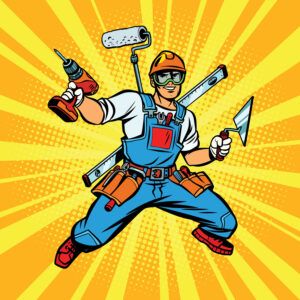 Those of us who have built or are building Experimental/Amateur-Built aircraft know that one of the rewards besides the airworthiness certificate is another document that entitles us to perform all the necessary inspections on the aircraft: the repairman’s certificate. It is issued to only one named builder of the aircraft and is not transferable to subsequent owners, no matter how qualified the new owner might be. One of the original builders must convince the FAA that he’s knowledgeable enough to maintain the airplane. A non-builder owner is allowed to perform all maintenance and modifications during the year but will need the services of an A&P mechanic to sign off the condition inspection.
Those of us who have built or are building Experimental/Amateur-Built aircraft know that one of the rewards besides the airworthiness certificate is another document that entitles us to perform all the necessary inspections on the aircraft: the repairman’s certificate. It is issued to only one named builder of the aircraft and is not transferable to subsequent owners, no matter how qualified the new owner might be. One of the original builders must convince the FAA that he’s knowledgeable enough to maintain the airplane. A non-builder owner is allowed to perform all maintenance and modifications during the year but will need the services of an A&P mechanic to sign off the condition inspection.
Most of the time, finding an A&P to sign off the condition inspection is not a problem. Unfortunately, some non-independent A&Ps are being prohibited from working on Experimental aircraft. It’s really kind of sad, given that the majority of the more popular Experimental aircraft that are in need of A&Ps aren’t all that much different from their certified brethren, being of aluminum monocoque design and equipped with Lycoming (or Lycoming-style) engines.
Back when the regulations were created for the Experimental/Amateur-Built category, the FAA included the repairman’s certificate. For the most part, the airplanes were simple, and the creator and/or builder probably would know more about the particular aircraft than anyone else. Most did not have complicated systems—electrical, hydraulic or otherwise—or constant-speed propellers, retractable landing gear and so on.
But Today
Now let’s fast forward to today’s amateur-built world. There are few builders working only from plans or committing a great deal of raw fabrication. Not long ago, if you wanted your own Experimental aircraft, you had to learn skills such as welding, woodworking and even fabric covering. But the kit manufacturers realized that the way to ensure kit completions was to get as close to the “51% rule” as possible in the kit offerings. The FAA even has an approved 51% kit list.
One result of this evolution is that most modern kits are more of an assembly project. Personally, I think that’s great, as we see a higher completion rate and higher-quality aircraft with far fewer builder mistakes. The EAA Tech Counselor program has provided immeasurable benefits in this area. There is also a whole lot more commercial assistance happening than ever, with repairman certificates still being issued to the named builder.
Just as the kit makeup has changed, so too have the airplane designs themselves. Many of them have the same or better attributes compared to current type-certified aircraft, which means they have become conventional in many respects. (A mechanic familiar with metal Cessnas won’t be totally lost looking at an RV.) But they’re vastly more sophisticated than the typical homebuilt of the early period—both in the panel and ahead of the firewall. Perhaps it’s a good thing that the complete engine installation and avionics can be performed by someone else and does not count against the 51% requirement for the builder.
As a Result
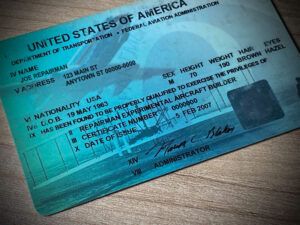
So now we can have a builder who most likely has no maintenance experience yet is permitted to sign off the aircraft as being airworthy on an annual basis. Many (perhaps most) kit manufacturers leave it to the builder to fill in the maintenance aspects of the design, offering little to no guidance for ongoing airworthiness.
The flying public (and that includes family members) have come to trust that there is a level of safety in flying due to the FAA’s involvement. Sure, we are required to tell our passengers that our aircraft is “amateur-built.” How many of you would admit that you make light of that during the briefing?
Our exposure goes beyond builders who have little experience maintaining aircraft. There is a strong belief that since our aircraft are Experimental, we do not have to comply with ADs or service bulletins—strictly speaking, this is legally true. And perhaps there was a time when this made sense, but from a moral and ethical standpoint, I don’t see how it is relevant today. Let me be blunt: If there’s an AD on a component and it’s not tied to a specific application—like an engine, for example, which typically doesn’t care what airplane it’s powering—there’s little defense in saying it doesn’t apply because you have an Experimental.
I see the AD and SB issues with non-builder owners who have A&Ps perform the condition inspection. A&Ps know that, for the most part, SBs for certificated aircraft are optional. Most don’t even know that they should look at the kit provider’s website for airframe SBs, partly because they haven’t been trained on it and partly because the data plate on the aircraft usually has the builder’s name on it—except in the case of S-LSAs and E-LSAs. What they also don’t know is that the regulations don’t allow for the issuance of ADs on Experimental aircraft. However, most of the kit manufacturers are good at issuing SBs. Some of them would be an AD in the certificated world, especially those that begin with “prior to further flight.” There are a lot more of those out there than owners realize.
Another area in which we see an attitude problem has to do with recommended time between overhauls (TBO). Most of our aircraft are single engine, so it’s quite important to take care of the engine components, including propellers. Most of the constant-speed propellers have both a calendar and total time TBO, with the calendar time usually coming up long before the operational time. Calendar time is usually six to seven years and starts at the date of manufacture, not installation. (Hint: Don’t be in a hurry to order the prop if you are two to three years from completion.) We see props with 16 or more years on them without an overhaul still being flown at night and on instruments in four-place airplanes. Personally, I’m somewhat OK with pilots taking the risks by themselves (somewhat!), but perhaps the passenger briefing should be amended to include something about the maintenance risk of ignoring manufacturer TBOs.
This is not something I say lightly. We send out a lot of props for overhaul every quarter, and about half of them come back needing internal work, including new bearings or races.
More than 50% of the prebuys and non-builder-owned airplanes that come through our shop have no entries in the logbooks referencing the completion of SBs. Many of them are repetitive and serious, such as looking for cracks in wing spars. Others may be for wear items that, if caught early, can prevent failures.
Looking Forward
To be clear here, I am not advocating that the repairman certificate should not be granted. However, I do feel we should reconsider the automatic issuance. I think the practice in the E-LSA community of having to take a two-week course to perform the work has been a great one, and the safety record proves it. It might be impractical to place that burden on the whole amateur-built community, given the record number of annual completions, but how hard would it be to require some type of online knowledge course completion, both for initial issuance and then on a continual basis?
We do that in a lot of other aspects of aviation; we have the Wings program, which even lets you forgo the annual BFR requirement if certain requirements are met. CFIs have been renewing their certificates through courses for as long as I can remember, and I like the new knowledge I gain every two years through them. I’ve also been a DAR for almost 14 years, and I still must pass a knowledge course every couple of years. I don’t have a problem with that. Regulations change, and there’s always something new to learn.
There are many organizations that have online courses and even video libraries that hold a wealth of knowledge. Perhaps even something as simple as documenting that you’ve watched a couple of videos about maintenance and you know how to check for the SBs on your particular aircraft would be sufficient.
I know we have a measure of “anti-authority” attitudes in our community, and no one wants to hear about additional requirements. But if we look in the mirror and understand that the whole premise of Experimental aviation is about recreation and education (we sign a statement to that effect, right?), then what’s wrong with a little continuing education regarding the aircraft in which we are going to place ourselves, family and friends? Think about it. I welcome your thoughts in the comments section below.
Illustration: Shutterstock.










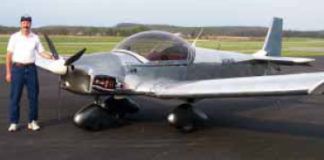
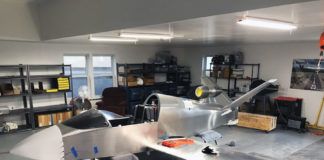
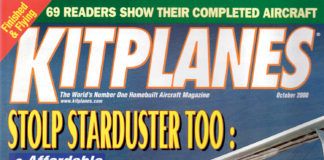

The article presents a cogent argument, but it appears to be a solution in search of a problem. The accident data, regularly presented by Ron W, does not indicate that poorly maintained homebuilts are falling out of the sky,. The accident statistics show a lot more mundane problems with the fleet. Running out of fuel, VFR into IFR, etc. We know that it will take FAA 4 years to fix the “simple” flight instruction boondogle so changing the repairman process is unlikely to attract FAA budget and man hours without the accident history indicating a clear benefit.
In the experimental world, not all incidents and accidents are reported, especially if no one is hurt. Why should we wait until the data shows us there is a problem? From my view, having looked at over 2000 RV’s to date as an example, there’s a good percentage of them that have serious maintenance problems. The worst case so far has been a propeller that departed the aircraft as it landed after having been flown from California to Georgia. Maintenance, including the propeller installation, had been performed by a non-builder owner. I am not advocating any priveleges get taken away–just some education should be required. In reality, we don’t even need the FAA to address it. Peer pressure in the AB community alone could work. 🙂
Just a point to ponder, the course to be able to inspect an E-LSA is only a 16 hour(weekend type) course. This applies only to an E-LSA that you have ownership in. To inspect S-LSA or non-owned E-LSA requires a 120 hour course.
I’m just advocating that all Repairman Certificate owners take the time to do some kind of education on the aircraft for which they are doing maintenance. There are plenty of on-line resources, especailly at the EAA, that fill the need.
More barriers to entry for those of limited means. More costs. More time away from jobs to travel to take courses that are not available anywhere near where you live.
Not really. I’m not advocating in-person courses. There are plenty of on-line videos and other resources that are available. We can either make excuses for nto wanting to get educated or figure out ways to get educated. 🙂
I agree with everything, you have said, it would be a better, safer world if more people thought this way.
The topic is, a fair to say, relevant to the idea individuals build most of these airplanes from kits or even scratch. Most of the aviation enthusiast, taking on the challenge of building an aircraft, are more familiar with the safety aspect of the build they choose and the required maintenance. The time away from flying due to medical, financial, etc. can take it’s toll on priority protocol of each task to perform for each. Don’t use it, you lose it! Annual refresher courses would be a way to introduce or enhance the knowledge to stay on top of changes within the aircraft they fly. I believe aircraft kit or plans manufactures would gladly take the time to provide a webinar class or classes to ensure the safety of their clients and to encourage pilots to share the added safety benefit the manufacturer has to offer with a product they provide. With all that being said, it’s up to ourselves to ensure the safety of our aircraft is top notch and give us and our passengers(family and friends) peace of mind we can get them home safely.
If the course were required, the government, or the EAA, would end up charging a fee. Some students forced to take the class would know more than the instructor. And the people who would most benefit, the ones I know who paid someone else to build their project, would pay someone else to take the course in their name.